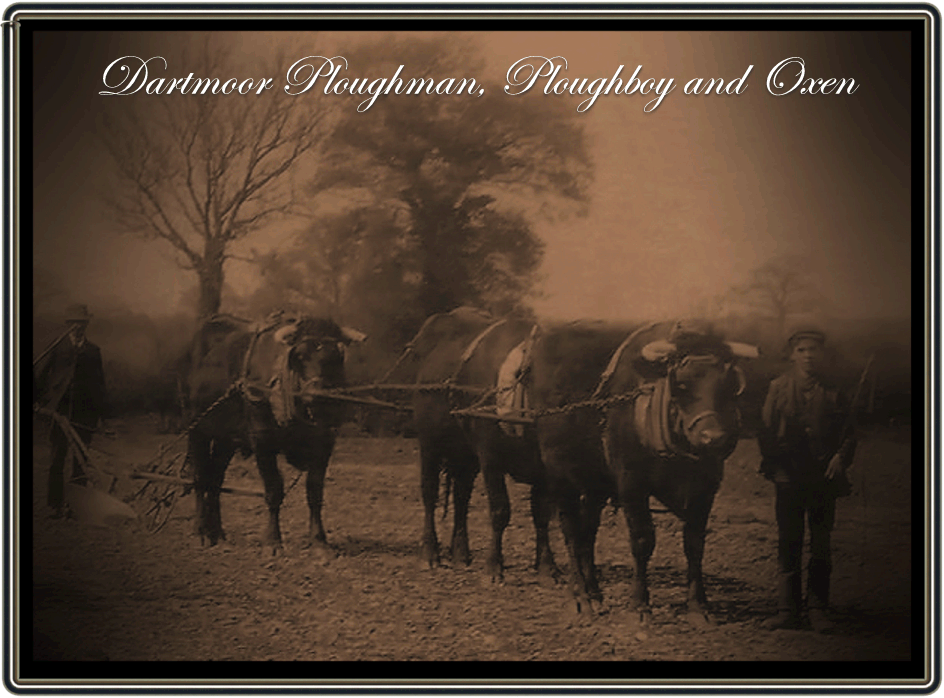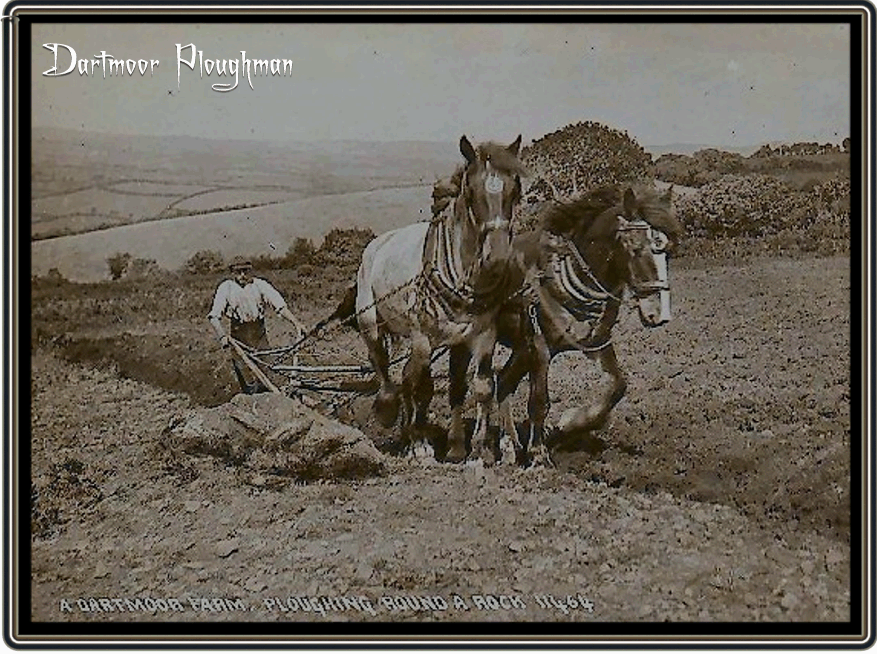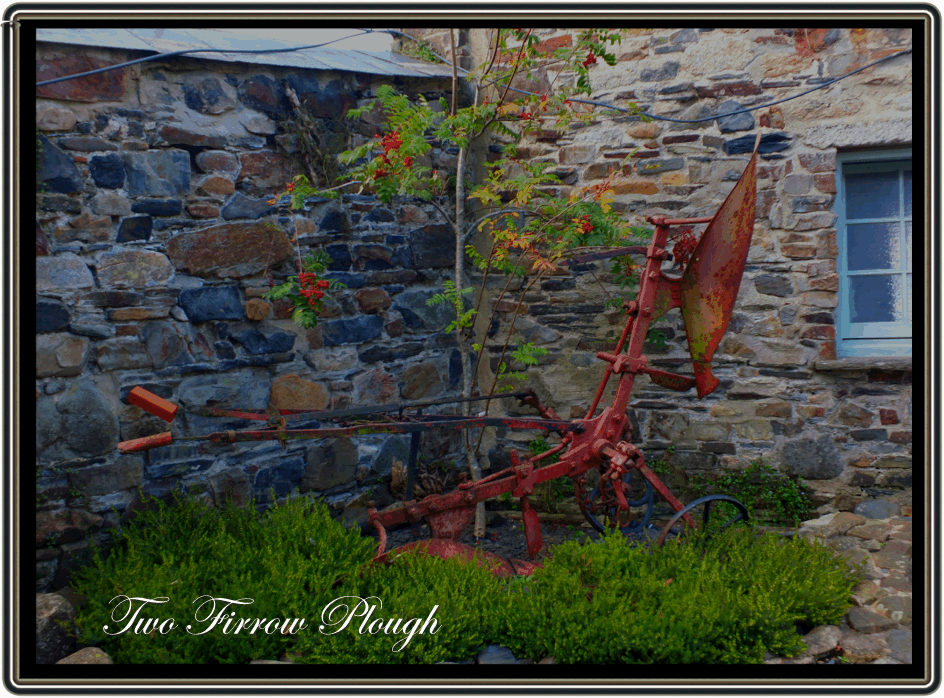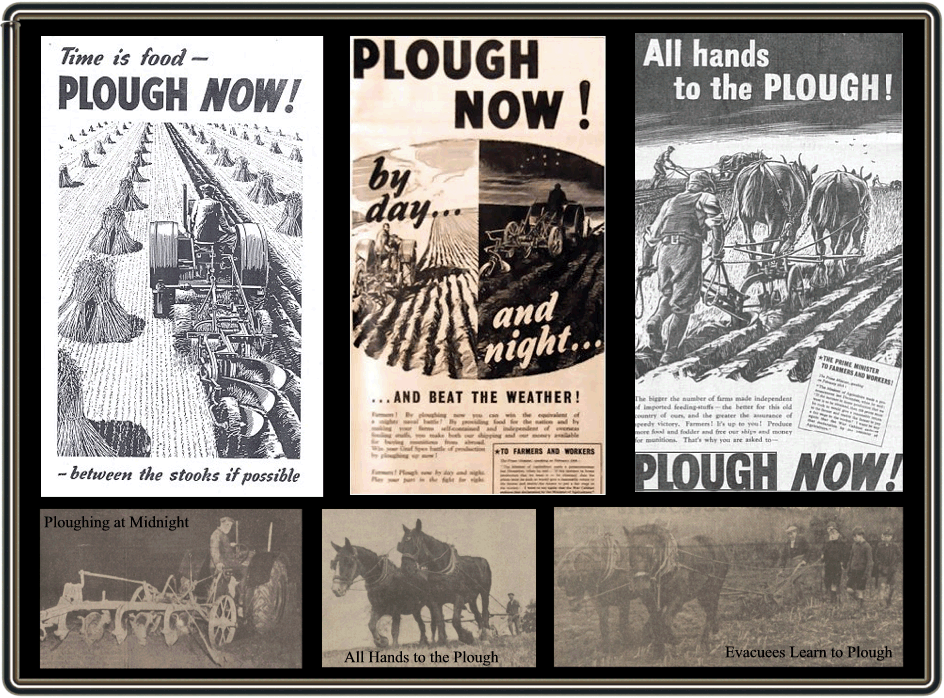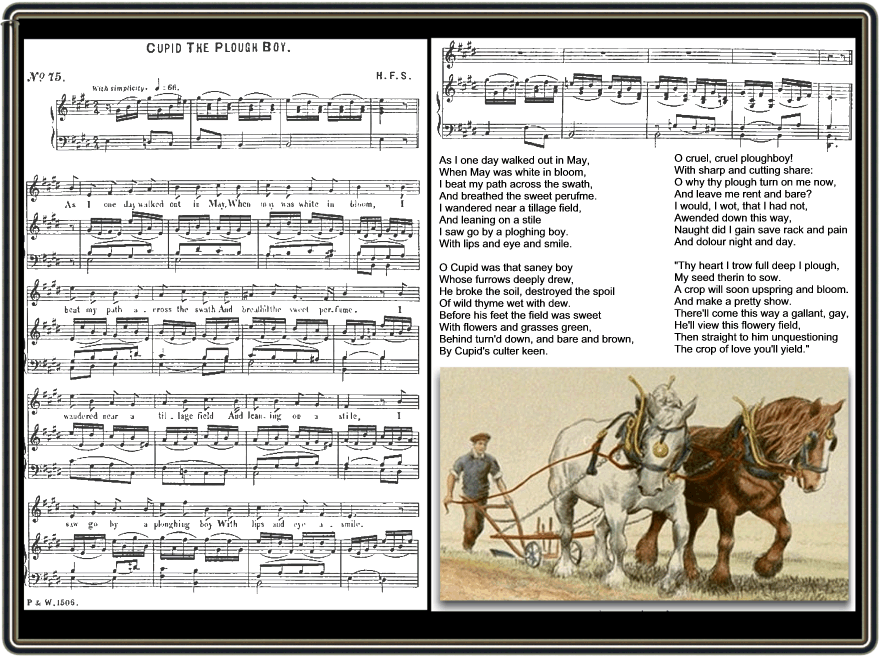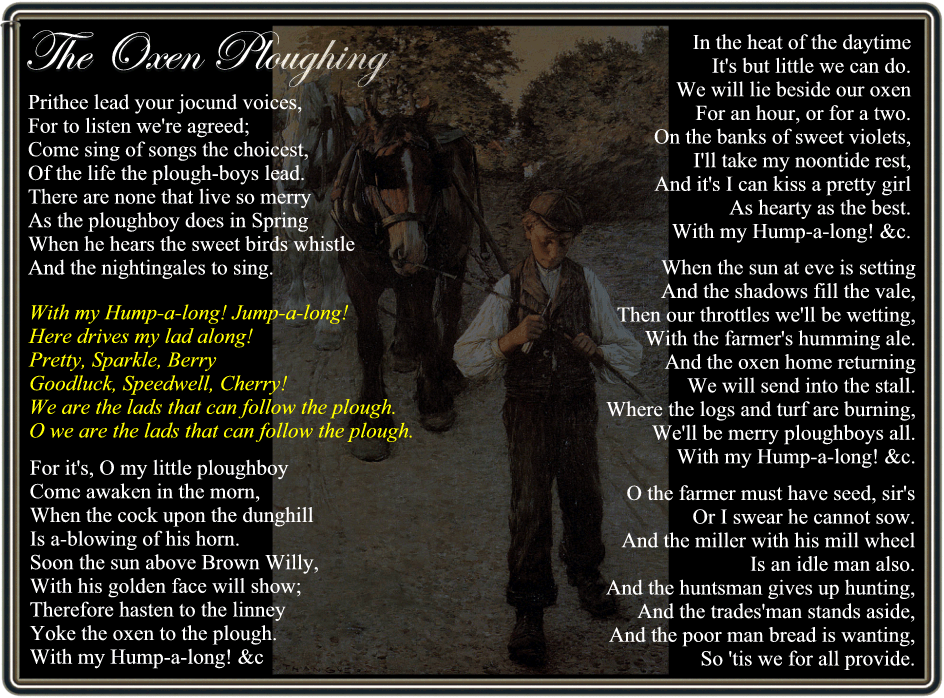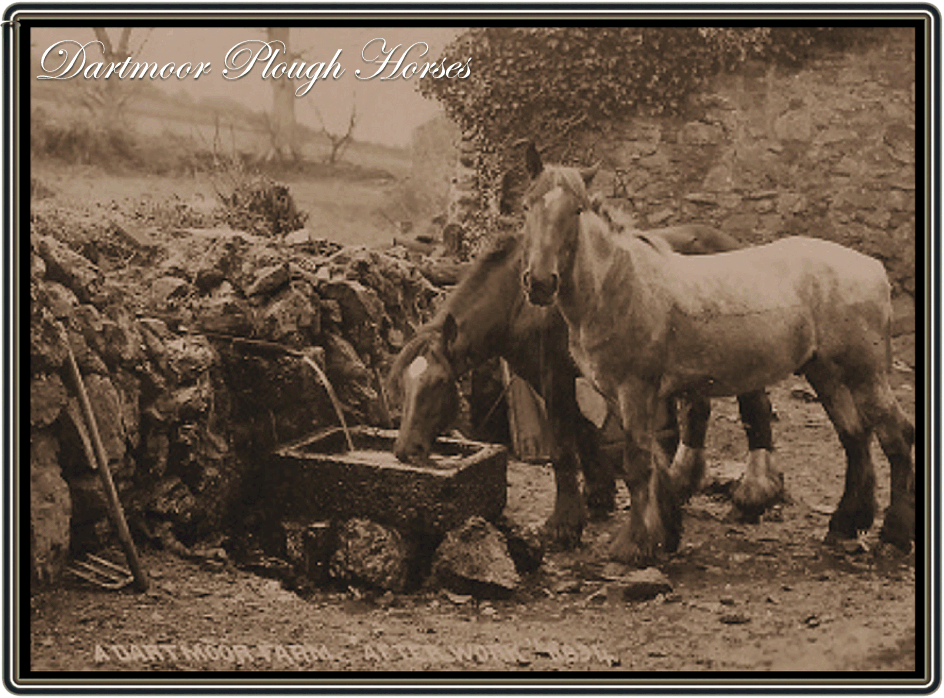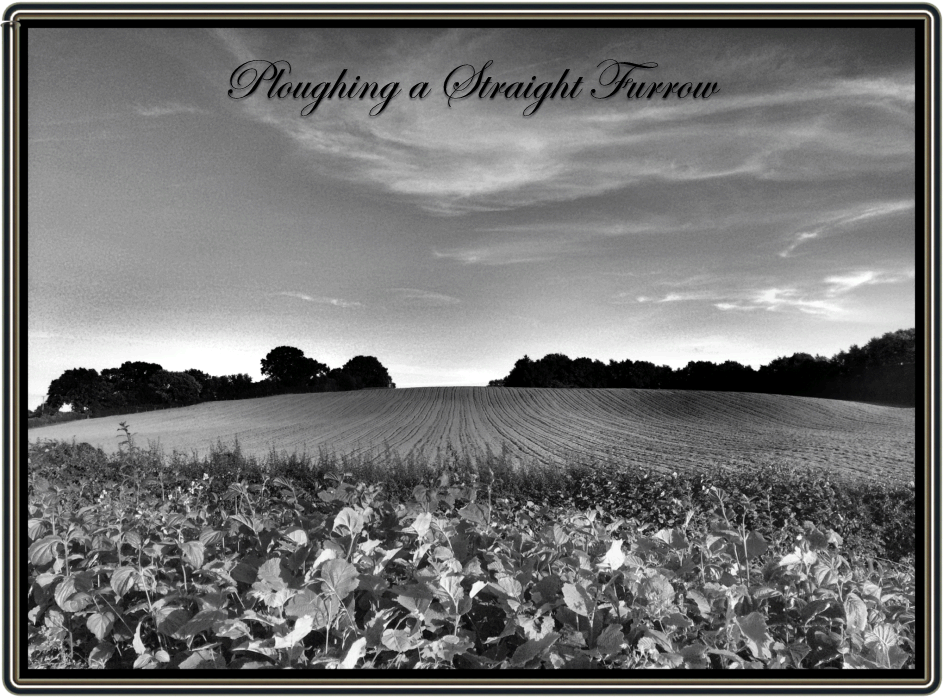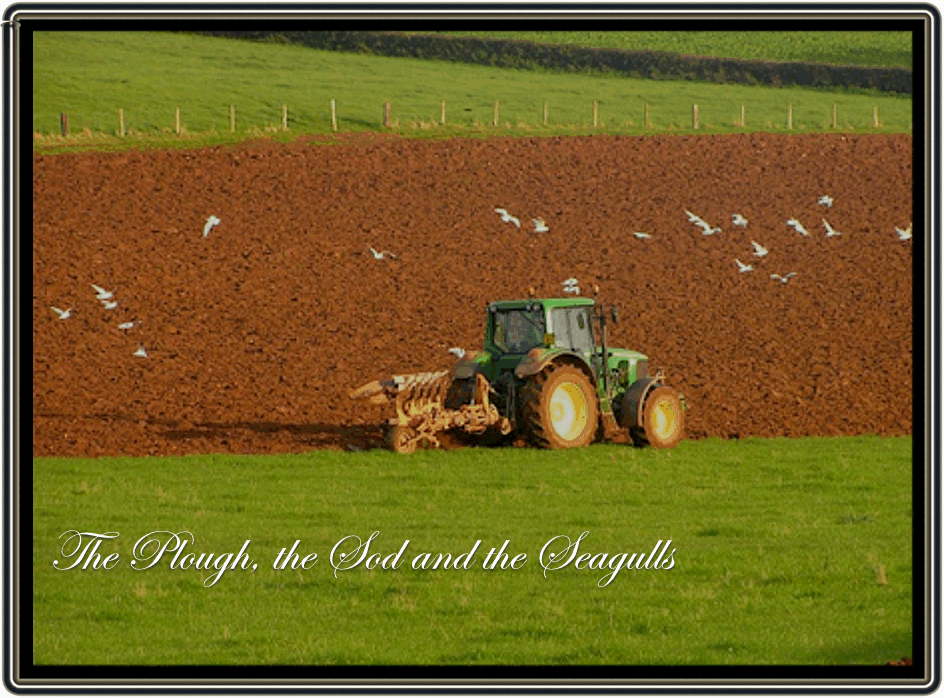
“Is my team ploughing,
That I was used to drive
And hear the harness jingle
When I was man alive?”
Ay, the horses trample,
The harness jingles now;
No change though you lie under
The land you used to plough.”
A. E. Housman
Even today I think there is something about watching a ploughman or woman at work, the straight furrows slowly engulfing the field, the flocks of seagull hungrily devouring the exposed grubs and insects and depending whereabouts you are the varying colours of the freshly turned soils. There is also a professional pride taken in the uniformity of the linear furrows, after all it is these that neighbouring farmers will and always have remarked on. Furrows act as a testament to the skill of those who at one time followed the plough and nowadays lead the plough, the only difference is what pulls or pushes it. It was not that long ago that every furrow was ploughed by the power of horses and in earlier times oxen, teams of them wending their ways up and down the fallow fields. To me, newly ploughed fields always hint of summer days to come as the golden grain crops await the harvest so as the cycle can begin again.
The Ploughs – It is a well know fact that crops were grown on Dartmoor since prehistoric times and to grow crops one had to prepare the land. This would firstly involve clearing as many of the granite rocks and boulders as possible which in some cases gave rise to the appearance of clearance cairns (heaps of cleared rocks etc). Having cleared the land the ground then needed to be broken up in order to plant the crops. The earliest implement for doing this was the ‘ard’ or ‘scratch plough’ which simply consisted of a length of wood called a draft pole into which was slotted a vertical, sharpened piece of wood known as the stock. The top end of the stock is the handle or ‘stilt’ and was how the ard was steered, at the other end the sharpened end was known as the ‘share’ which did the actual ploughing. The ard was simply dragged through the soil either by draft animals or by manpower and in all reality just gouged the soil. For centuries this design remained little changed with the draught pole or plough beam as it later became known being the ‘backbone’ to which all the other components were fitted. Amongst these fixtures were; “the coulter, made of sharpened iron which cut the ground vertically, infront of the share. A second beam attached to the main spar which ran almost parallel but angled downwards this held the iron share or shim which sliced horizontally through the earth at a set depth as the plough pushed forward. Sat behind the share was the long mould board which turned over turf thus burying and sward or weeds this not only meant they would rot under the soil but a clean top soil would be left. The actual steering of the plough was done via the two handles at the end of the beam and depending on how hard the ground was could involve a huge amount of muscle-power to keep a steady furrow. At the far end of the plough were either a harness or chains to which the draught animals would be attached, in some cases it would be some poor soul sitting in the harness.” – Woods, p.131.
Writing back in 1808 Charles Vancouver in his ‘General View of the Agriculture of the County of Devon’ describes a common type of plough used at that time which was the ‘Swing-Plough’ or ‘Turn-Wrest’ and was know locally as a ‘Sull’ or ‘Zull’. The term deriving from the old Anglo Saxon word for plough – Sül in addition the word zullgang also was an Anglko Saxon derivative from the word Sülgang meaning land which could be ploughed in one day, Clarke Hall, p.323.
“The common Devonshire plough, made by a hedgerow carpenter, and seldom exceeding in cost 15s. irons included, is much used; and candour must allow, that its performance is far superior to what might be expected from the very rude appearance it makes. either at work or lying empty on the ground. It is a swing-plough with a beam about seven feet long, lying nearly parallel to the head and heel of the plough: at the end of this beam, is occasionally fastened a horizontal graduated iron, to which the team-band is affixed, and regulates from the line of draught, the direction of the plough either the land or furrow… The shares used upon these ancient ploughs differ in their forms, according to the kind of work to be performed with them..“,
The illustration below shows the components and the purposes of a Devon swing plough as described by Vancouver, the key is as follows – A to B = Beam of ash 6ft 6″long, C to D = Landhold 5ft 6″, E to F = furrow hold which is a narrow board nailed to the spill at G and connected with the hand hold by a stave going from O to O, H = is a small piece of oak board called the Ladder Hold to which is fixed the Mould Board the breath of the Mould Board at the bottom is regulated by the length of the stave I K which connects it at the Landhold, this mould called here the Groutiss(?) Is the Chip going from L to L is generally made of apple wood. The share is 20 inches long with the point bending downwards. M is a crooked stick passing through a mortice in the beam used by young ploughmen to regulate the depth of the furrow – this is called Devut(?)
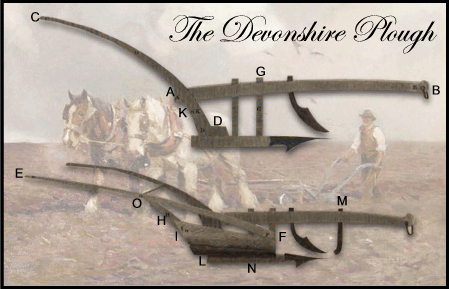
Certainly with many of Dartmoor’s fields and enclosures there were two main problems presented to the ploughman; the steepness of some ground and the stony nature of the soil. Imagine a plough-team going at full pelt with the ploughman hanging onto the plough handles. Suddenly the share/s hit a buried stone or obstruction and the plough is immediately halted in its track, however the draught animals carry on along the field. In some cases the abrupt halt caused injury to the ploughman and/or damage to the plough either way the ploughing operation came to an end. To overcome this problem the iron bolt which fastened the draught chain to the end of the beam (see B above) was replaced by a wooden pin which meant in such an event the plough-team and plough were separated. In 1919 a Dutchman called Henry Veldermans came up with a slightly different approach to clearing stony ground on Dartmoor as was reported in the Western Times. His plan was to bury charges of gelignite twenty seven inches into the ground, once exploded they would break up the hard stone ground thus allowing the plough to follow in and prepare the land for sowing. Apparently in that year he treated 150 acres with his ‘explosive’ method which allowed him to successfully grow potatoes, carrots, swedes and turnips. In 1854 one Mr. Tanner who at the time won a prize from the Royal Agricultural Society for producing a report on the cultivation of Dartmoor. In this he detailed what at the time was a typical system of husbandry having first noted that due to the harsh climate there was no regular system. The more general plan was to beat and burn the turf and the plough the land 3 or 4 inches deep in preparation for turnips which were harvested in November and then buried in pits in the field. Once the turnips had been eaten the land was then ploughed again and a crop of oats planted.
With regards to the challenge of ploughing steep ground the simple answer was to plough along the contours, this had the effect of limiting the amount of soil which would later be washed down the slope. For this a special type of plough was used which allowed the ploughman to throw the furrow both to the left and right by shifting the mouldboard at the end of every furrow. The ‘One-Way Plough’ ensured that the soil was turned in an uphill direction thus ensuring that there was no downhill furrow and a reduction in soil being washed away. As time progressed more varieties of ploughs were produced which could adapt to different types of ground; the single furrow plough had the one mouldboard, the multi-furrow plough with two or more moldboards and the subsoil plough which was used to break up hard ground, the riding plough either a single of multi furrowed plough with a seat to name but a few.
Dartmoor Field Names – Very often the actual name of a field can give a clue as to what challenges faced the ploughman; – Bow Meadow (Widecombe), land with a curved boundary, Bowling Green (Dunsford), flat or level land, Brand Iron Piece (Ilsington) – a trivet or triangular shaped field, Brandy Plat (Drewsteignton) field shaped like a bottle, Burn Mead (Bridford) – land prepared by paring and burning, Charming Park (Manaton) – easily managed land, Costislost (Sourton) – unproductive land, Crookedy Meadow (Ugborough) -field of twisted or irregular shape, etc. As you can see many of these names allude to fields of irregular shapes which were much harder to plough, especially when turning at the end of the furrows.
The next technological advancement was the introduction of the steam or cable plough which where used completely negated the need for draught animals. This in turn was replaced by the tractor which was introduced in the early 1900s. However, most of these advancements were costly investments and on Dartmoor many of the traditional methods of ploughing were still used. In 1861 it was reported that in the Chagford District; “the old wooden plough is still at work, and the goad is still used to urge the yoke of oxen dragging it along.”
Probably at no time in history has the plough played an important role than in times of war, especially during the Second World War. As can be seen below there was a nationwide campaign to encourage farmers to plant more grain and fodder crops. In 1940 it was stated that 1,500,000 acres of grassland was put under the plough in order to grow more crops. There were several reasons for this initiative; as Britain is an island a large amount of grain was being imported this in turn used up valuable ships which were needed for the war effort as well as saving the national gold reserves and foreign exchange rates for purchasing imports.
The Ploughmen and Boys – There can be no question that the early ploughmen had a back-breaking task, often walking about fifteen miles a day up and down the fields. Often in cold weather they would be hanging on to the heavy plough handles with sometimes only their draught animals for company. However when large teams were used to pull the plough there would be a ploughboy leading and goading the team whilst the ploughman steered the plough. Quite often the ploughman and ploughboy would be singing to the plough team as observed by Marshall in 1796: “The plow boy chants the counter tenor, with unabated ardour through the day; the plowman throwing in at intervals, his hoarser notes. It is understood that this chanting march, which may sometimes be heard to a considerable distance, encourages and animates the team, as the music of a marching army, or the song of rowers. Let this be as it may, I have never seen so much cheerfulness attending the operation of plowing, anywhere, as in Devonshire.”, pp. 116 -117. Easy for him to say, he was not trudging up and down the field. Whilst ploughing was in progress there were long days for the ploughmen and boys, again Marshall noted: “The hours of work are well regulated. The ploughteams make two journeys a day, they go out before eight in the morning, and return at twelve. Go out, again, before two and return before six: working about eight hours a day.” However this was not quite the whole story, whether it be horse or ox they needed to be prepared for the days work and once the day was done they needed to be fed, watered, groomed and bedded down, all of which was the responsibility of the ploughmen or boys. In some cases this meant an extra two to three hours on their working days.
Superstitions – Probably the most widespread taboo was for a ploughman to work a field on Good Friday for it was said that to put metal into the soil would surely result in a death in the family of the one that did so. In fact many farmers believed that to set their ploughmen to work on a new field on any Friday would spell disaster for the forthcoming crop. If for whatever reason anyone should plough an old burial ground then the dire outcome would be that the eldest son of whoever did the deed would die before too long. One old Dartmoor saying that even today can ring true is the warning that Old Crockern gave; “You scratch my back with a ploughshare and I’ll tear your pockets out.” This prophecy has proven true with many of the early improvers who thought they could make a profit out of reclaiming moorlands to grow crops. In most cases they invested a lot of time and money in these projects only to be met with failure and having their; “pockets torn out,” and all their investments and efforts falling through the holes in their pockets. Anybody that has worked with horses will know that sometimes they can get a bit temperamental and it was a wide belief that a whip of goad made from holly wood had the ability to control them should they ever get uncooperative. Therefore it was not unusual for ploughmen to employ the services of such a whip or goad.
Customs. – One of the oldest custom pertaining to ploughs is that of Plough Sunday, the day when ploughs were brought into church to be blessed in the hope that it would ensure a bounteous harvest bin the summer. This occasion was always held on the 1st Sunday after Epiphany which was around the 6th of January and in some parishes is still practiced today, although not with modern ploughs. Plough Monday was regarded as a ‘festival’ basically to mark the beginning of the working year and young ploughboys would take advantage of this by, in some cases, dragging a plough around the village asking for money. Some would sing a little ditty to add value to their donations; “Remember us poor ploughboys, A-ploughing we must go, Whether its rain, blow, hail and snow, A-ploughing we must go.”
Ploughing a field is probably on of the most ‘visible’ of farming operations and virtually every ploughman took/takes a great pride in their work ensuring that they always ‘ploughed a straight furrow’. Prior to planting their ploughing skills were highly visible to both master and the neighbourhood, the rich soil and its furrows stood out contrastingly in the landscape and so no ploughman worth his salt wanted crooked furrows. The who idea of ploughing was to provide a good tilth which needed to be not to plum (soft) or too hard in order for the seeds to germinate. Therefore it was always said in Devon that the best fertilizer was the ‘Farmer’s Foot’. This referred to the fact that once the field had been plough the farmer would gauge the ploughman’s work by dragging the toes of their boots through the soil in order to establish if the right tilth had been reached.
There are several local sayings that pertain to ploughing; “He who by the plough would thrive, Himself must either hold or drive.”, this basically suggests that if you want a job done properly at least have some input into the task. Another one goes; “Who ploughs deep while sluggards sleep, Will have corn and sell and to keep.”, here we have reference to those who start work early reap the rewards at a later date. There was then; “You’ll never plough a field by turning it in your head.“, basically suggesting nothing will ever get done simply by thinking about it. Finally there is the famous; “To plough a straight furrow one should never look back.”, this applies to ploughing and in life to some respects. To plough a straight furrow the ploughman would fix his eye on some landscape feature ahead of him like a tree or a fence post and steer towards it. Should he ever look behind him he will momentarily lose sight of his marker and then possibly the line of his furrow.
Such was the ploughman’s pride in his skills that ploughing matches were/are held at which the ploughmen compete against each other. These normally occur in the months of October and November when the event can take place at a venue where fields are ready to be ploughed. In the early 1800s newspaper adverts often appeared for local ploughing matches at which the prize money could be one or two Guineas which back then was well worth winning. This tradition carried on through the 1990s and just one example of a local ploughing match appeared in a newspaper from the October of 1929 regarding the Holne Hedging and Ploughing match. The Judge was a Mr. J. Cock of Ashburton who awarded first place in the single furrow competition to a E. G. Barter and there was a first place tie for the youth’s competition with G. Codd and W. Timms. In the November of 1947 the Devon and Exeter Gazette carried a report of the Bridford Horticultural and Agricultural Society show at which they held their first annual ploughing match. The first prize in the Ferguson tractor class went to one Hans Ammend who was infact a German Prisoner of War.
Clearly things have moved on today and with the modern tractors and ploughs the job of tilling the soil is so much easier but these changes have come along at a price. A good second-hand 7 furrow plough could cost anything up to £30,000 and as for a used John Deere tractor you would be looking at the very least £15,000. However no matter how technologically advanced the equipment is the art of a ‘straight furrow’ still needs the eye of the ploughman.

Clarke Hall, J. R. 2004. A Concise Anglo-Saxon Dictionary. London: University of Toronto Press.
Marshall, W. 1970. Marshall’s Rural Economy of the West of England – Vol. 1. Newton Abbot: David &Charles.
Vancouver, C. 1969. General View of the Agriculture of the County of Devon. Newton Abbot: David & Charles.
Woods, S. 2003. Dartmoor Farm. Tiverton: Halsgrove.
 Legendary Dartmoor The many aspects past and present of Dartmoor
Legendary Dartmoor The many aspects past and present of Dartmoor

